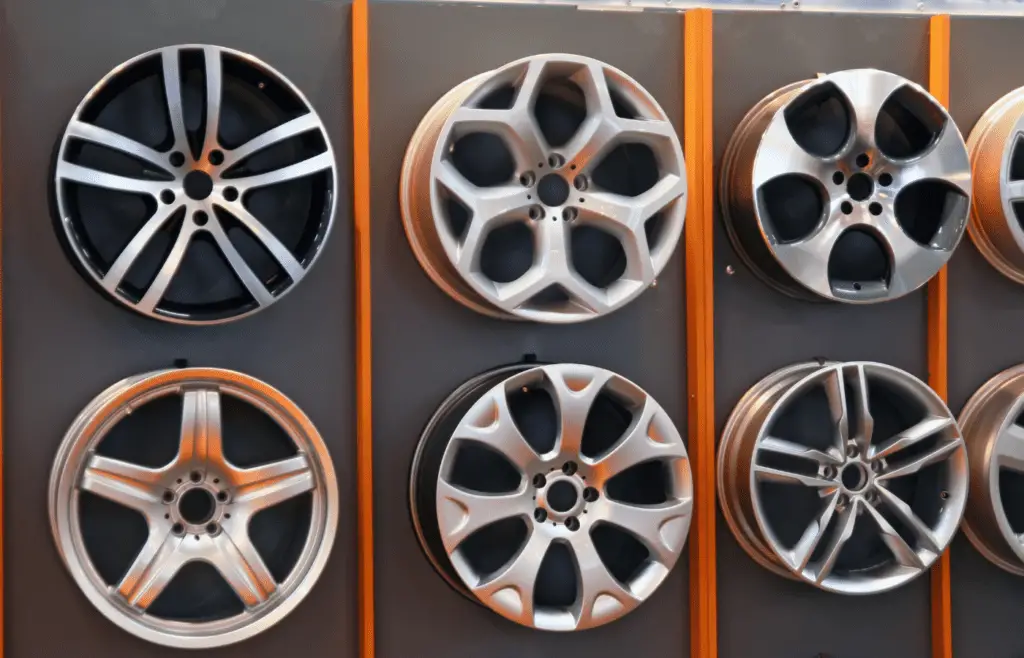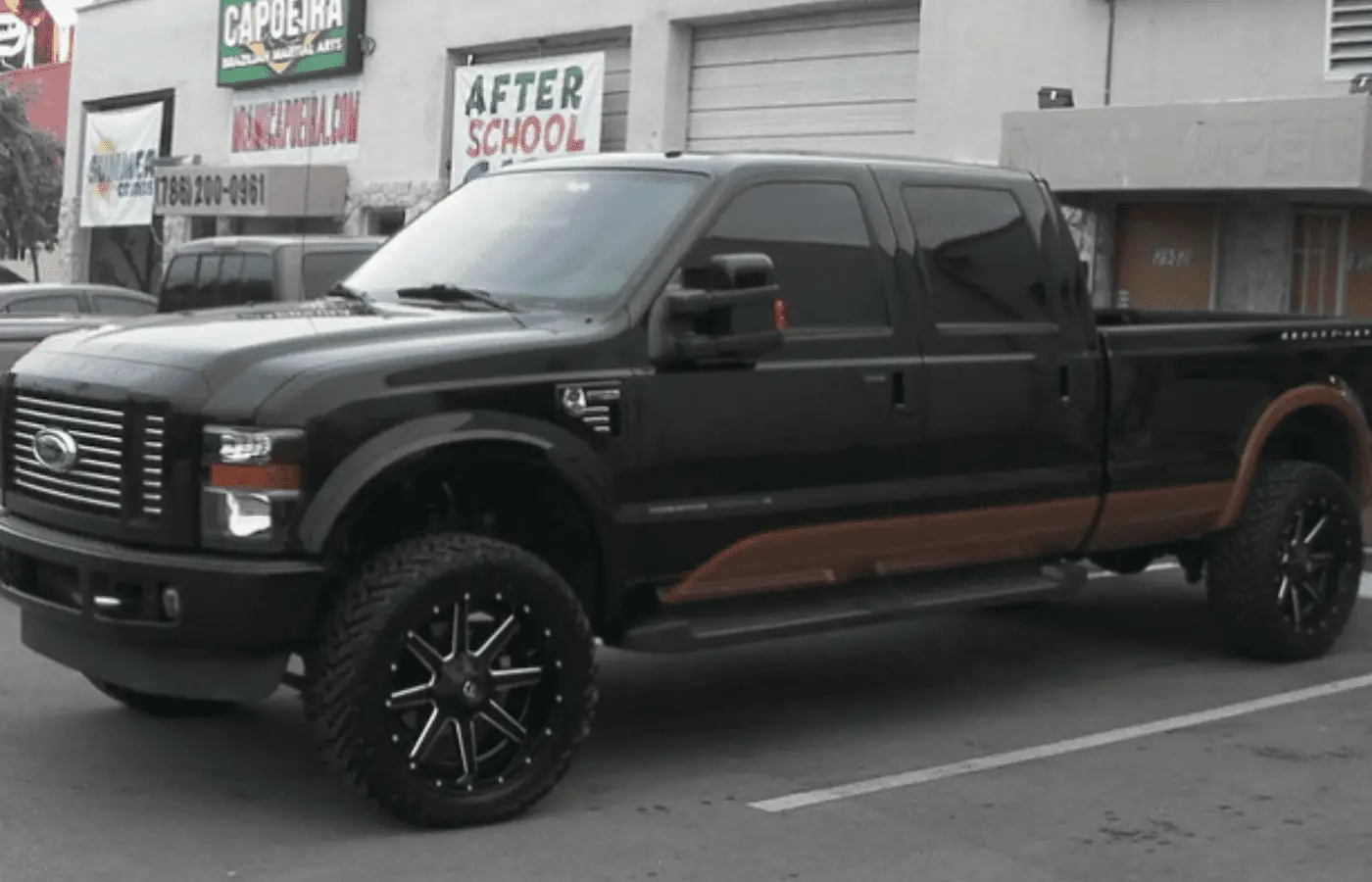If you’re considering purchasing 22 or 24 inch rims for your truck, there are a few things to consider first. It’s important to keep in mind that larger rims can negatively affect how your vehicle handles and rides.
The increased size changes the center of gravity and puts more strain on the suspension system, which can lead to poor alignment, decreased traction control, and faster tire wear. Replacing smaller wheels with larger ones also means replacing parts for better performance such as brakes or other components.
Bigger rims often require different-sized tires than what originally came with the truck, which can add significantly to the cost of the upgrade. All of these potential drawbacks need to be weighed against the aesthetic benefits of choosing larger rims before deciding whether they would be beneficial for your vehicle.
Are 22 Inch Rims Too Big?

22 inch rims have grown increasingly popular on cars over the past few years, and often high end sports cars come fitted with these large wheels by default. However, despite their aesthetic appeal, there are a few drawbacks that should be taken into consideration before choosing to fit your vehicle with 22 inch rims.
One of the most notable disadvantages is the increased difficulty in finding compatible tires for this size wheel due to its large size.
Apart from logistical hassle, having such large wheels can also affect handling, increasing suspension wear and reducing fuel efficiency due to more frequent rotation of larger tires.
Something else to consider is the fact that very large rims may not be approved for use in certain states, making it difficult for you to register your vehicle.
All these considerations must be accounted for before deciding on whether or not 22 inch rims are right for you.
Does 22 Inch Rims Affect Gas Mileage?
The impact of 22-inch rims on gas mileage is a complicated issue, as much will depend on the vehicle in question, tire size and pressure, and driving habits.
Due to 22-inch rims being larger than standard rims and tires, they increase wheel weight and offer less rolling friction due to their extended sidewall height.
This results in an increased demand for fuel from an engine that must overcome the added weight of the wheels. Furthermore, with taller profile tires, aerodynamic drag may also increase due to more wind interference around the wheel well area.
Users should thus keep these factors in mind when deciding whether or not 22-inch rims are suitable for their purposes.
While it can be difficult to accurately predict this impact without testing various rim sizes on specific vehicles, users may find that opting for smaller rims could result in improved fuel efficiency over time.
Pros and Cons of Having Big Rims on Your Truck

The most obvious advantage of having big rims on your truck is that they give it an impressive look. Not only will you stand out from the crowd, but you can also customize the design of your wheels to fit your exact style preferences.
Additionally, some larger wheels may come with improved performance benefits, such as improved grip and handling in off-road terrain.
Finally, because large wheels create more space between the wheel and tire, you can also select larger tires that can offer superior traction control and stability.
While bigger is often considered better when it comes to vehicle modifications, there are some drawbacks to consider before investing in large rims for your truck.
For starters, larger wheels tend to be heavier than smaller ones, meaning they can decrease fuel economy due to added weight.
In addition, because large rims typically require low-profile tires in order to fit correctly on the wheel hub they can be more prone to punctures or other types of damage due to their reduced sidewall strength.
Finally, despite their aesthetic appeal and performance benefits, large rims are much more expensive than standard size options so if you’re looking for a budget-friendly modification then big rims might not be for you!
Pros and Cons of Big Rims and Steering
Car enthusiasts might debate the pros and cons of big rims and steering forever, and there’s no single answer they’ll agree on. The size of the rims affects how much power your car can handle and how it will steer, as well as your vehicle’s weight balance and handling.
Wider rims typically require more brake torque to slow and stop the vehicle, making them more suited for driving on smoother surfaces than off-road terrain.
On the other hand, smaller rims can offer greater control over long distances on uneven or rocky terrain due to their decreased mass.
Bigger rims also tend to be heavier and possibly cause wheel lockup or tire tread wearing if you’re driving at high speeds.
Steering is affected both by the size of the rim and its associated weight. Larger diameter tires allow for better contact with the ground which in turn leads to better traction during turns, giving a driver complete control during each maneuver there are downsides here too.
An overreliance on turning can wear down tires quickly unless you ride with reason and caution.
Pros and Cons of Big Wheels and Transmission
Big wheels and transmissions are two key components that determine a vehicle’s performance. Bigger wheels, which typically measure 17 inches or more, allow vehicles to better tackle off-road surfaces, as the larger wheel size helps elevate the frame of the car, providing a more comfortable ride.
As for transmissions, standard models are preferred for those who enjoy manual control over their vehicle’s operations while automatic is ideal for individuals looking to minimize effort when shifting through gears.
Having such control offers motorists an improved experience in terms of both speed and distance, not to mention the advantage of being able to respond quickly when changing directions at high speeds.
On the downside though, larger wheel sizes can be difficult to maneuver in tight corners and cause greater difficulty in certain environments such as rain or icy roads.
Final Thoughts
Improper installation or lack of maintenance could result in poor performance as well as an increase in fuel consumption. Thus, it’s important to carefully consider the pros and cons before making a decision about bigger wheels.

